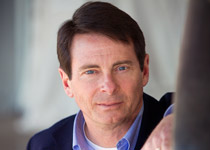 The sleek RV–4 quickly grew in the Bonanza’s windscreen. I kicked in a little left rudder and backed off on the throttle as we slipped into position just a few feet below and to the right of the Experimental airplane.
The sleek RV–4 quickly grew in the Bonanza’s windscreen. I kicked in a little left rudder and backed off on the throttle as we slipped into position just a few feet below and to the right of the Experimental airplane.
“Remember, each power adjustment is really three adjustments,” reminded George Perry from the right seat. Perry is the new senior vice president of the AOPA Air Safety Institute and a former Navy F/A–18 squadron commander ( see “Safety Spotlight: In the Interest of Safety,” page 26). “One to catch up, one to slow down, and one to stay with him.” Perry, with his military precision formation experience, was there to coach me back into formation flying, the flying AOPA editors do routinely to capture the air-to-air images on these pages. I took myself off the list of those flying wing more than five years ago because I didn’t have time to maintain proficiency. I have regularly been flying lead, or platform as we call it—the airplane that carries the photographer. That position requires less formation proficiency.
But I missed the challenge of flying wing and felt less than challenged flying lead. When I expressed an interest in getting back into it, Senior Editor Dave Hirschman quickly volunteered his RV as lead and Perry got volunteered to fly with me—which was fitting, as I originally learned formation flying from a naval aviator.
I was surprised at how quickly the basics came back, and I felt comfortable and confident throughout that flight when doing our normal photo routines. Perry encouraged me to push the envelope slightly and with his close supervision had me doing some military-style intercepts and an overhead arrival back at the airport, fun and challenging exercises.
One difference that makes photo formation more challenging than military formation is that the person flying wing—or subject—is expected to follow the photographer’s commands for positioning the airplane in the frame. During photo missions, we move around—up, down, forward, aft, left, and right—while doing 360-degree turns and climbs and descents in formation, all to provide different angles and backgrounds to the photographer. “Move down three feet,” is not an unusual request relayed via radio from the photographer. That’s not difficult, even when you’re flying only 20 feet from the photo platform. “Hold it right there.” Now, that’s difficult on a bumpy day.
Another difference is that military formations typically are flown with similar aircraft. Frequently, for photos we’re flying very dissimilar aircraft with different speed ranges. I recently flew formation in an Eclipse jet on a Bonanza platform, which was challenging given the speed differences. The most challenging one I can recall was flying a Cessna Citation business jet behind a tired old Cessna 206 over the desert near Sedona, Arizona, on a bumpy morning. Fortunately I had a great co-pilot who continually reminded me of the airspeed as we struggled to stay slow enough to safely fly behind the Stationair.
The rewarding return to formation flying reminded me how important it is to continually challenge ourselves to expand our aviation horizons, both to increase proficiency and to increase aviation’s value equation. Learning new skills keeps us sharp and reminds us why we learned to fly in the first place—to experience things that the vast majority will never get to do.
Earlier this year I earned a seaplane rating, which I found more challenging than I had anticipated, but also more rewarding than I expected. It takes a lot of skill to safely maneuver an airplane on and near the water. Today, no matter what airplane I’m in, I can’t fly over a lake without looking down and estimating the wind speed and direction based on cues that previously I didn’t know existed. Another on my bucket list is tailwheel flying. I’ve been checked out in a couple of different tailwheel airplanes over the years, but have never had the opportunity to spend enough time in any of them to become what I would consider proficient. I was trading emails recently with a celebrity pilot who has recently gotten into general aviation. He quickly moved into flying an Eclipse jet, but now he’s also learning tailwheel flying.
When I told him I also was attempting to master tailwheel flying, he wrote back, “Master! I’m looking to keep my first bounce under eight feet!”
Sounds like he and I are in about the same place.
One of the wonders of flying is that there is never any part of it that is truly mastered. You’re only as good as the landing you’re about to make, and there’s always some part of aviation yet to be explored. As we move into the new year, I hope you are planning to stretch your wings a bit and broaden your aviation horizon. You will find it rewarding. See you at the airport.
Editor in Chief Thomas B. Haines flies his Bonanza A36 for business and pleasure.
Email [email protected]
Social: Follow on twitter.com/tomhaines29

